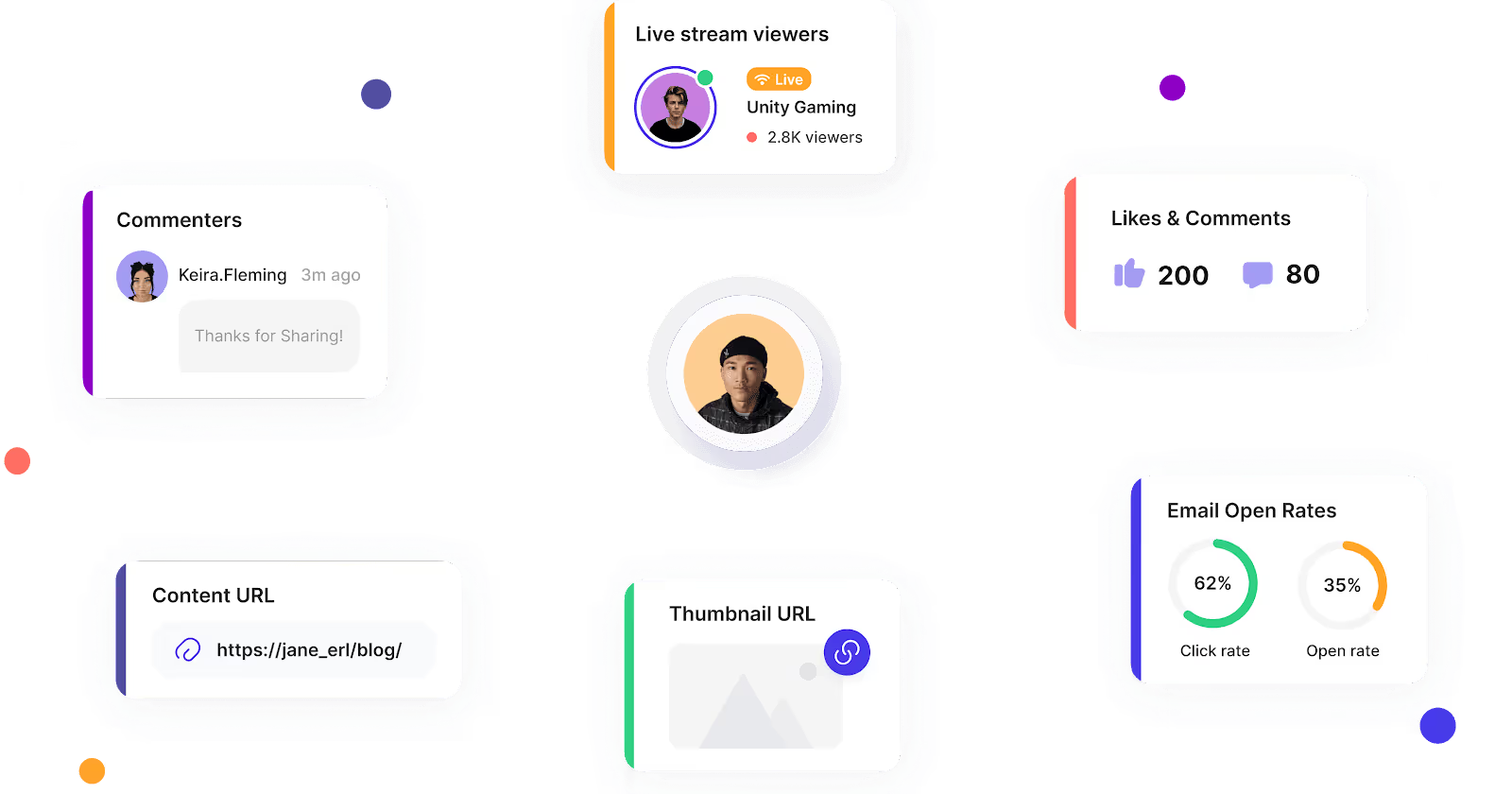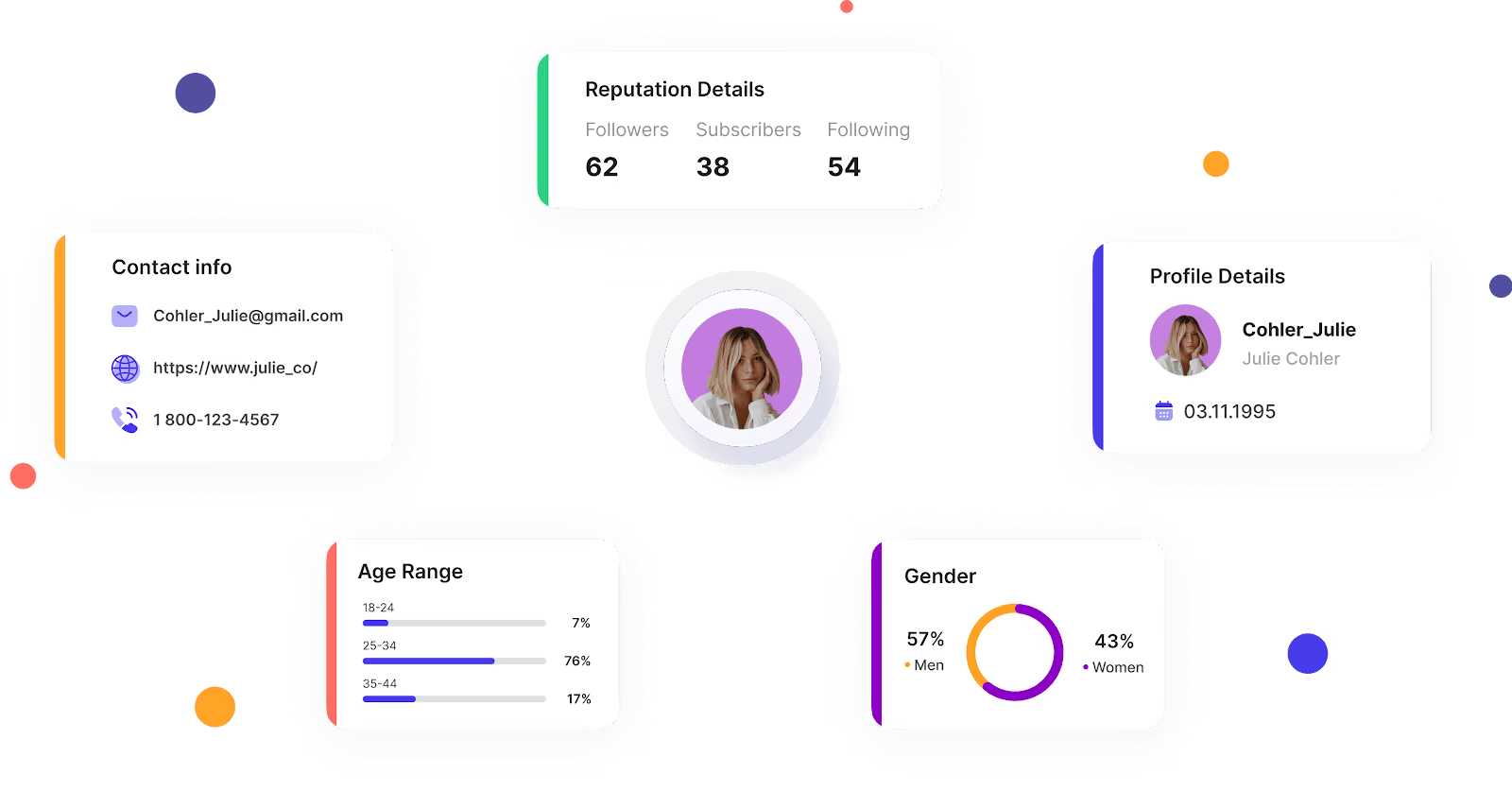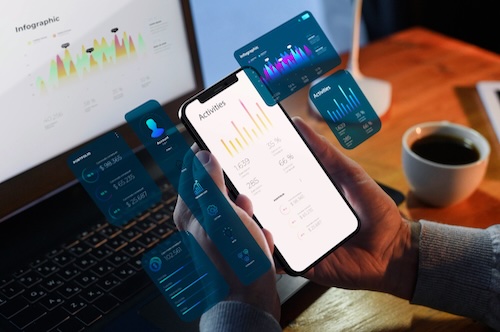Twitter, recently renamed as X, is one of the highly trusted social media platforms with over 166 million users that can give your brand an authentic endorsement in front of a vast audience when leveraged correctly. According to Twitter’s recent earnings report, over 50% of Twitter’s 237.8 million monetizable daily active users are ages 35 and younger. As a small business owner trying to find customers online, understanding potential target audiences feels like trying to go through a maze blindfolded. The sheer amount of data on platforms like Twitter makes it hard to extract meaningful insights about who my ideal customers might actually be. That's where Twitter's API comes to the rescue with its detailed demographic analytics capabilities.
In this article, we will break down how small business owners can leverage Twitter API analytics to gain a competitive edge. We will learn Twitter’s core demographic metrics, how to access audience data through their API, and how to turn that demographic insight into customer growth.
Key Twitter Demographic Metrics
By tapping into the demographic targeting power within Twitter's APIs, small businesses can gain the customer intelligence we desperately need to take the guesswork out of our digital marketing strategies. Here are some key metrics to focus on.
Age and Gender:
The API gives you demographic analysis through details like the age and gender of your audience so that you can tailor content for maximum resistance. This data is valuable while designing campaigns or targeting any specific audience segment (e.g. % of the female audience for women's fashion product promotion).
Geographical Location
The Twitter API provides geo data of your users which includes details like country, state, and sometimes city-level information. Twitter collects these pieces of information from the profile and tweet locations of the user. You can leverage this data to plan localised marketing strategies that best influence the local audience. By local marketing strategy, it means customising your content based on regional preferences, languages or cultural values.
Interests and Behaviors
When you release tweets in line with user interests and behaviours, you get better engagement. The API helps you gauge these traits of your users. You get to know what topics they are interested in, the types of accounts they follow, their tweeting frequency and engagement patterns. When you analyse them, you unlock trends and patterns to segment your audience and target them with customised strategies for effective results.
Language
Surprisingly, nearly 44% of people prefer brands that speak their local language. When you target a local audience from different countries, language becomes an essential marketing metric. Thankfully, the Twitter API also helps you understand the different language backgrounds your audience belongs to aid your geo-targeting strategy. When you use this data to design multilingual content, your message gets received by a wider audience, which results in high engagement across different linguistic groups.
Device Usage
With 7.41 billion mobile users, you have to make your campaigns cross-device-friendly. It includes targeting content for different screen sizes (mobiles, desktops, tablets, etc.) and platforms. This is where the Twitter API becomes helpful. You get to know the percentage of users for different types of devices along with their engagement experience with your content.
Engagement Metrics
Engagement Metrics show how people receive your content. The API shows you the number of likes, retweets, replies and mentions for each of your posts. You can analyse these metrics to understand which topics and types of content to focus on to generate the most audience engagement.

How to access Twitter API Demographics data using the Twitter API
Step 1: Set Up Your Twitter Developer Account
First, you need to have a Twitter Developer Account to access the API. For that, you need to apply for access to the official website by providing information on your plan to use the API. Once your application receives the official approval, you can create a project inside the developer portal to obtain your API access keys and tokens. These credentials authenticate your requests to access the API.
Step 2: Understand the API Endpoints
Twitter offers several API endpoints to help you access different types of data, such as user information and tweet data. However, when you are interested in Twitter API demographics data, you will require endpoints that deal with user profiles and behaviours. For instance, the User Object endpoint gives you basic demographic information, such as location, language, and description of a user. You can get information related to all such endpoints from the official API documentation.
Step 3: Authentication
Authentication confirms your request is secured, and you hold permission to access user data.
Twitter supports two different types of authentication requests:
- OAuth 1.0a for user-context requests
- OAuth 2.0 Bearer Token for app-only requests
Choose the appropriate one depending on your access level and required data type.
Step 4: Make Requests
Now, you are all set to make authenticated API calls. You can use HTTP GET or POST requests to relevant endpoints to access demographic data. You can also pass in parameters to filter and customise data as per your area of interest. For instance, for demographic data, consider using parameters that filter out location and language fields for users for your analysis.
Step 5: Handle Requests
The Twitter API provides data in JSON format. You must write or use existing code to programmatically parse this JSON response and extract the necessary demographic information. Some responses might contain more data that are difficult to process in a single request. They require pagination to retrieve large data sets in a structured and manageable manner. Also, you have to keep in mind the Twitter API rate limits. This refers to the maximum number of requests you can make to the API from a single IP address.
Step 6: Data Analysis
Once you have all the necessary demographic data, it’s time for analysis. You can use statistical tools or programming languages like Python to identify patterns, trends, and insights within the data. Data analysis would help you discover audience distribution across different geographic locations and by language preferences. A deep analysis might also uncover the most engaged segments of your audience.

Now, let’s examine some best practices for easily accessing and utilizing demographic data.
Best Practices
Respect Privacy: Twitter has its own data privacy guidelines and local regulations. In this regard, using any demographic data should be as per user consent and privacy policies.
Monitor Rate Limits: Try not to exceed the API rate limits by making over requests that might result in call restrictions from Twitter.
Stay Updated: Twitter periodically updates its API policies. Keep yourself updated on any changes to access demographic data without any official restrictions.
How demographic data can be used to gain valuable audience insights?
Demographic data is important to understand and engage with your audience in a meaningful way. However, you must know how to leverage this data to unlock valuable insights that set the base for content creation, product development, and overall campaign strategy. Let’s understand in detail.
Tailored Content Creation
When the store owner greets you by name and knows your family, you feel special. Targeted ads should reflect that spirit - speaking to the customer in a meaningful, truly relevant way. One of the most direct applications of demographic data is in the content creation in line with the audience's interests and behaviour. The API helps you understand the age, gender, geographic location, and interests of your audience. Now, you can follow that data to create campaigns that convey a “we value you” rather than a “we want your money” spirit.
Strategic Campaign Targeting
Demographic data allows for the strategic targeting of marketing campaigns. Your audience is most likely to respond to specific offers or messages tailored as per their demographic specialty. For instance, if a fitness app sees its largest user base as women between the ages of 25-34 living in urban areas, creating ads featuring women in that age group would yield the best response. This targeted approach makes your campaigns highly effective by ensuring that people receive messages relevant to their interests and needs.
Product Development and Innovation
Almost all product developers often struggle to understand their target customers' needs and preferences when designing new products. Twitter's API offers valuable demographic data like age, gender, and location of people tweeting about their product categories. A mere analysis of that data can offer companies valuable insights. For example, consider the API shows 18-25-year-old females in urban areas tweet more enthusiastically about an organic skincare line than other groups. This suggests an opportunity for that skincare brand to focus innovation efforts on natural ingredients and sustainability to align with values that resonate most with these potential high-value customers. Likewise, the API also helps brands make data-driven decisions during product development to best serve customer needs.
Enhancing User Experience
Nearly 75% of people judge a brand by its website user experience. UX challenges are more prevalent if you’re using an app. If you’ve launched a new app, you might not be able to make informed improvements unless you get enough insights on user experience with your diverse customer base. That’s where Twitter API demographic data can help you. By breaking down demographic data like age, location, and interests of people tweeting about our app categories, you can better understand usage patterns. For example, the API shows younger urban professionals frequently tweet suggestions to simplify our note-taking app's interface. This indicates an opportunity to tailor the UI to be more intuitive for your power users. With the API’s detailed demographic analytics, you can make informed decisions to create a frictionless, satisfying experience for each customer segment.
Gaining Competitive Advantage
It’s challenging to understand the niche audiences better than competitors. Twitter’s API helps address this. You can use Twitter demographic data points to categorise users based on their age, location, and interests in tweets. For example, the API shows 40-50 years-old from tier-2 towns tweet more about your low-cost products than other demographics, it’s an opportunity to further target marketing campaigns to capture more of this highly engaged customer segment before competitors. When you take such proactive steps, you will lead with higher loyalty and brand advocacy than your competitors, as customers feel understood and valued by your campaigns.
Use the Right Tool to Understand Twitter Influencers
If you are a small business owner, you may struggle to identify the right influencers to partner with for Twitter campaigns. While follower count offers a baseline metric, true influence depends more on engagement rates. Without a deep understanding of audience interaction for each potential influencer, it's easy to waste money on big names who draw little actual engagement support. That's where Phyllo has been a game changer. By leveraging its Universal API to access detailed Twitter profile data and engagement metrics for individual influencers, you can make informed, data-driven decisions about the best brand partnerships. Phyllo's identity API links influencers across platforms for full cross-channel insight. The tool brings welcome clarity to influencer analysis and gives your campaigns the essential context needed to choose high-impact collaborations that actually move the needle for your business.
Conclusion
Twitter API is a powerful tool for understanding your audience's behavior for proper campaign planning. You can use the insights to tailor content creation, decide on the target audience, hire the right influencers, improve campaign engagement, and gain an overall competitive advantage over your competitors. However, leveraging an ideal universal API is also instrumental in utilizing the Twitter API to its full capacity without triggering any official rate limits.


.avif)







